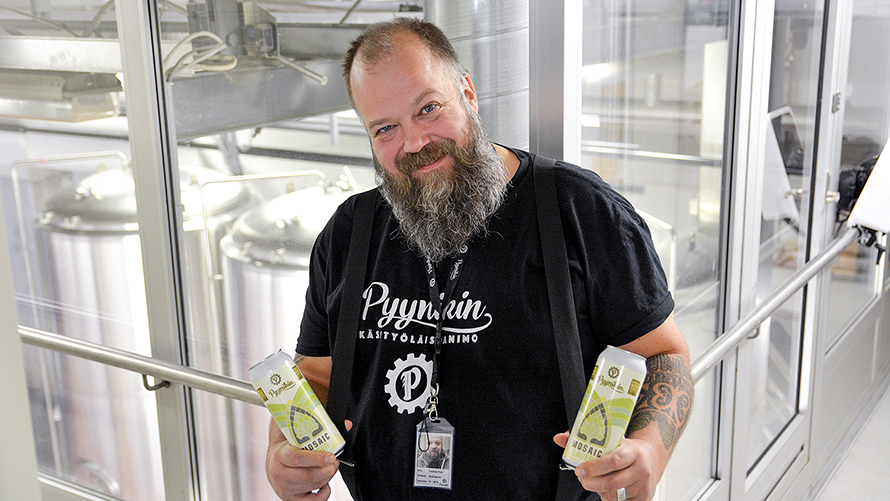Craft beers from different microbreweries first made their breakthrough in the United States. Today the craft beer boom has spread all across the world. Beer connoisseur and blogger Noora Kokkonen from Helsinki, Finland, is not surprised that microbrewery products are now, quite literally, on every beer enthusiast’s lips.
“The complex taste of craft beers is fascinating. There’s a brew for every occasion, whether you are craving a beer to chill out with on a summer’s day or a beverage to accompany a certain dish.” Kokkonen likes to try new products. She is drawn to bottles and cans with interesting labels.
“If the product has a stylish and fresh visual look, I’m instantly intrigued. Labels with bright colours or a minimalistic design are the ones I notice first.”
The essential information on the contents have to be clearly visible on the packaging.
“I want to know if the beer is an IPA, APA, lager or something else. I also appreciate information on the type of hops used. If there is not enough information, I might not buy the product.”
Microbrewery invests in labels
Pyynikki Craft Brewery is a Finnish microbrewery that caters to discerning beer connoisseurs. The Tampere-based microbrewery develops its product range based on customer feedback.
“We also focus on the visual look of our products in order to make them as interesting as possible. Furthermore, we don’t want just the alcohol content and other mandatory information to be displayed on the label. We want to tell our customers more about the beer,” says Brewmaster Tuomas Pere.
It takes a couple of months to develop a new beer from an idea into a ready-to-buy product. As the brewery team starts to think about the taste and recipe, they also begin to plan the visual design with an advertising agency.
“With 3D modelling, we can visualise the product’s appearance while the first batch of the new product is being brewed.”
 “The Vanish label is so thin that it reduces the amount of material required and preserves the environment”, says Brewmaster Tuomas Pere from Pyynikki Craft Brewery.
“The Vanish label is so thin that it reduces the amount of material required and preserves the environment”, says Brewmaster Tuomas Pere from Pyynikki Craft Brewery.
Success in World Beer Awards
Pyynikki Craft Brewery started brewing in 2013, and the company currently has over 2000 minority holders across Finland. Business is booming, partly thanks to the brewery’s success for two years running in the internationally renowned World Beer Awards.
Last year’s winner in the seasonal lager category was a beer called Mosaic Lager. The beer was named after the mosaic hops used to brew the beer, adding tropical and citrus notes.
“Mosaic Lager is an almost perfect all-rounder. The stylish can is the final touch, a passionate kiss to the beer,” says Pere.
The label of the award-winning beer depicts a stylish cone of mosaic hops.
“The label that reflects the taste of the beer. The can prepares the taster for the aromas and the first sip of the beer.”
Thin labels facilitate recycling
Mosaic Lager is packaged in cans. The labels are made from UPM Raflatac’s label material called Vanish. “The material is so thin that it’s hardly noticeable. With Vanish, we were able to achieve an impressive design that truly highlights our brand. The label is big enough to tell the story of the beer,” says Pere.
Vanish responds to the needs of microbreweries because the adhesive is also a cost-effective option for labelling smaller batches of beer. Because Vanish is so thin, labelled aluminium cans are recyclable just as they are. Previously, it has been difficult to recycle labelled cans along with other returnable cans with a refundable deposit. This is because the weight of label plastic has been too high in proportion to the weight of the can.
In Finland, the recycling rate of aluminium cans is 95 per cent. Compared to glass bottles, cans are a cheaper option for both manufacturers and consumers alike.
Read more:
Assessing the Lifecycle of Wine Bottle
Vesa Puoskari
